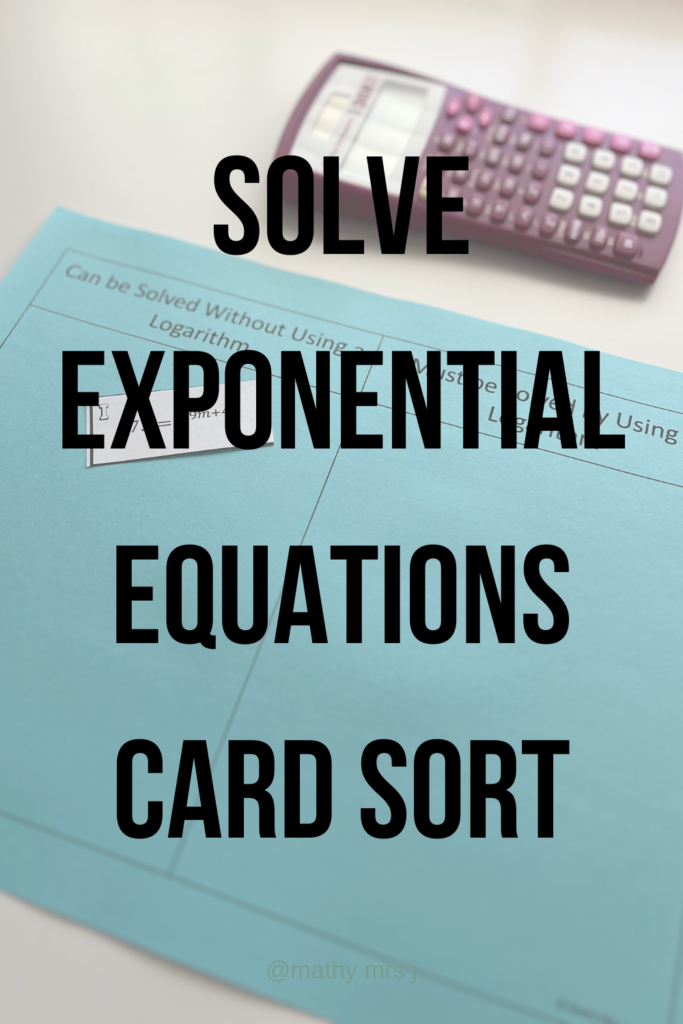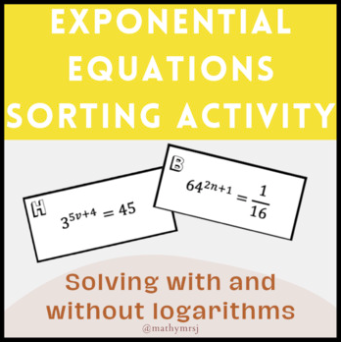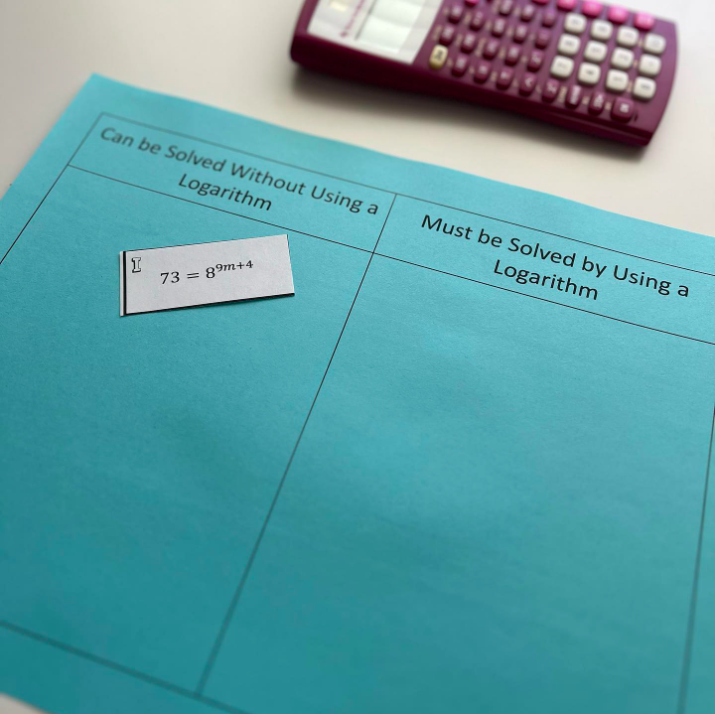
A big emphasis for me as an educator is developing learners’ confidence in making decisions, which in part means improving students’ procedural fluency in math. I used to think “well I told them the difference between solving with and without logs, so they know which is which”, but eventually I learned I needed to FORCE them (nicely 🙃) to confront the difference. Here’s an activity that increases students’ understanding when it comes to solving exponential equations. But first, what is procedural fluency?

What Is Procedural Fluency in Math?
Procedural fluency goes beyond rote memorization; it’s about having the ability to execute mathematical procedures accurately, efficiently, and with confidence. In essence, procedural fluency empowers students to wield math as a powerful tool for problem-solving and critical thinking. Whoa, read that again. A powerful tool for students to use. What a gift you can give your students!
Improve Procedural Fluency With a Sort and Solve
When I teach students how to solve exponential equations there are two types of equations that arise, those that can be solved by finding a common base and those that can be solved using a logarithm. I needed students to know the difference and this required them to have procedural fluency. I developed an activity for student to sort different equations into the two categories.

Sorting several equations into the two categories helped them learn the difference between the two types of problems and gave them the confidence they needed to distinguish between them in the future. From there, they had the confidence to choose the correct, or most efficient, method for solving!
More Ways To Use This Method
This activity works for lots of different topics, including rational equations that can or cannot be solved by cross multiplying. Consider using this method to help students understand graphing linear equations in different forms, determining which quadratic equations have no x-intercepts or comparing linear and exponential data.
Tell me how you use math stations in your classroom! Let’s continue the conversation in the comments or on my social media: @mathymrs.j on IG.
Don’t forget to request access to my FREE resource library – click here!
Happy teaching!
Natasha
